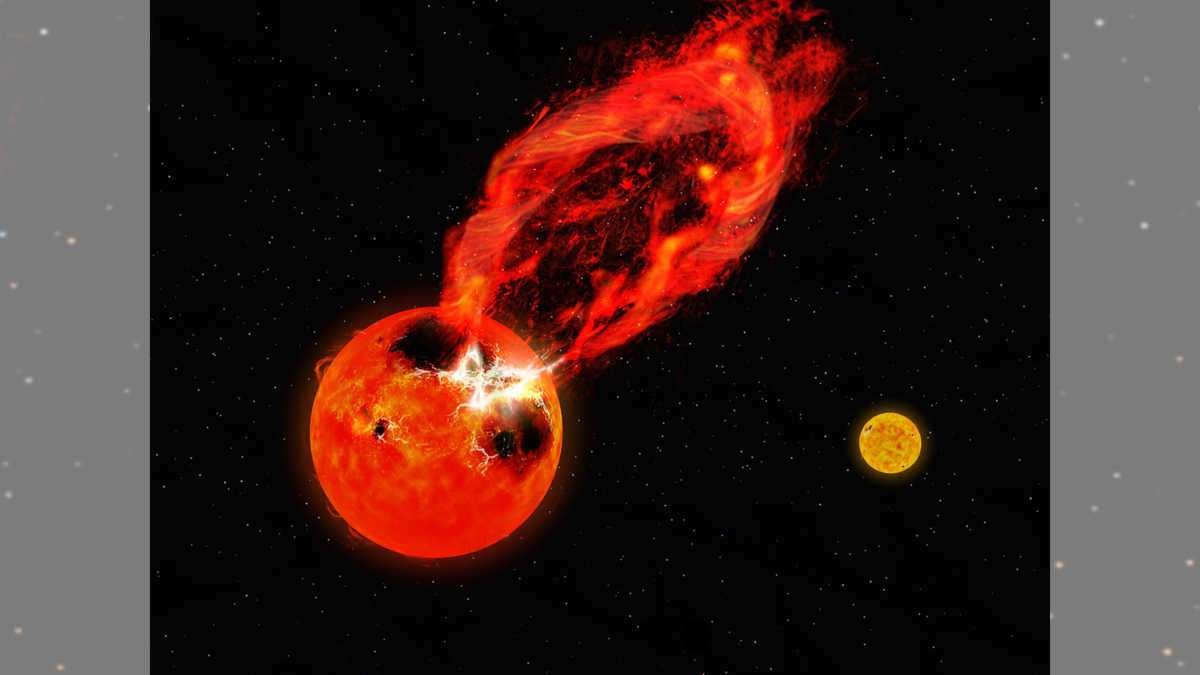
Scientists scoping out a star system in the constellation Orion have witnessed one of the most gargantuan and powerful stellar flares ever seen.
Dubbed a "superflare," the enormous blast of stellar radiation is 10 times more massive than anything ever witnessed erupting from the sun, according to new research published in The Astrophysical Journal (opens in new tab).
While the mechanism behind these monster flares still isn't well understood, the new research suggests that superflares originate from stars that are highly magnetically active. These superflares may be accompanied by enormous eruptions of charged particles that could devastate life on any planets in their firing line, the study authors wrote. (Fortunately for us, Earth is not one of those planets.)
In their new research, the astronomers targeted a star system called V1355 Orionis, which is about 400 light-years from Earth and features two stars orbiting each other. These stars belong to a class of stars known to harbor many sunspots — dark, planet-size regions that form as the result of intense electromagnetic activity — and that have been tied to other observed superflares.
In general, stellar flares occur when magnetic-field lines in a star's atmosphere tangle, snap and reconnect, releasing a powerful gout of radiation that's visible across the entire electromagnetic spectrum. On the sun, flares may be accompanied by towering loops of plasma, known as prominences, that can rise tens of thousands of miles above the sun's surface. If this solar plasma launches quickly enough, it can break free of the sun and become a coronal mass ejection (CME) — an enormous blob of high-energy particles that can knock satellites out of orbit and short-circuit power grids on Earth, if our planet happens to be in the blob's path.
Combining observations from the Transiting Exoplanet Survey Satellite and the Seimei Telescope in Japan, the researchers studied the distant star system in multiple wavelengths of light to capture the most complete picture possible of the superflare's evolution.
They found that the flare began with one of the most powerful stellar eruptions ever seen — a high-velocity prominence that burst out of one of the stars at more than 2.2 million mph (3.5 million km/h). This blast far exceeded the star's escape velocity, launching trillions of tons of electrically charged matter outward into space in what may be one of the largest CMEs ever observed, the authors wrote.
It's not certain how, exactly, such a powerful CME would impact life on any hapless planets that got in the way — but the researchers said the effects would be far more catastrophic than those associated with even the worst CMEs to hit Earth.
Ultimately, this mega-flare's discovery is less a cautionary tale for our planet than it is a caveat in the search for life on other worlds: Planets around magnetically hyper star systems like V1355 Orionis may not be the best places to look.
https://ift.tt/kPGeQiU
Science
No comments:
Post a Comment